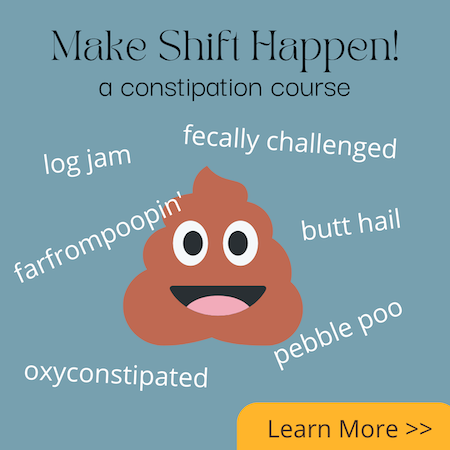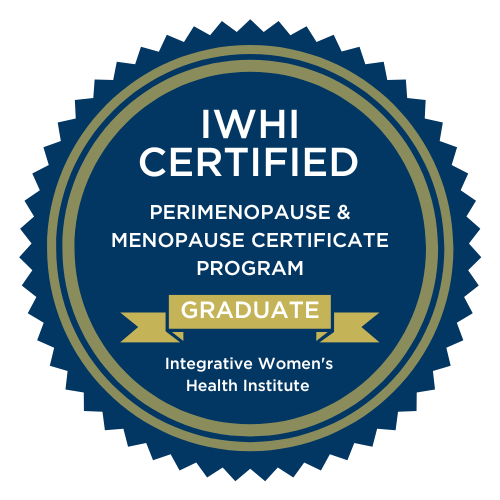I received lots of menstrual health questions on the Menstrual Survey form. Below is an attempt to answer a few of those questions. Since there were so many questions, I’ll address blocks of questions in separate articles. These are quick fire answers, but I have included links for further reading. Today’s topics: heavy bleeding and painful periods, low progesterone, pelvic and uterine alignment, blood clots, and how to know if you have a tipped uterus.
The human body is complex and no two people are the same, so these answers are general and should not be used as medical advice. Consider it a starting place to explore further.
Does heavy bleeding always accompany painful periods?
No, sometimes you can have heavy bleeding and mild to no cramps. And sometimes you can have painful periods and light to moderate flow. There can be many reasons for heavy periods. I wrote an article on possible causes HERE.
I’ve had fertility issues in the past, had two miscarriages, and struggle with low progesterone during pregnancy. Is there anything I can do?
Vitex, (Vitex agnus-castus), also known as Chaste Berry, is one of the most popular herbs used as menstrual cycle regulator. Clinical trials have shown it to be effective in infertility due to decreased progesterone levels or hyperprolactinemia and recurrent miscarriage, especially when the miscarriage starts with spotting and is due to progesterone deficiency. You can read more in the article I wrote HERE.
Something else to think about stress hormones and sex hormones is made from the same mother hormone. The production of stress hormones will always win out and negatively affect your progesterone levels. It makes sense, no? If you’re chronically stressed out your body is not going to put the energy into creating a new baby, its priority is survival.
I really want to realign my entire pelvis. My uterus is out of place and pelvic muscles are asymmetrical, tailbone possibly misaligned.
This is such a big topic! Pelvic alignment is a whole body issue, not just pelvic positioning. The uterus is connected to the inside of the pelvis, so if the pelvis is out of alignment, it places unnatural loads on the uterine ligaments. I will cover all of this and more in my online Womb Care course (which will be released in 2019). In the meantime, I recommend either seeing a Nutritious Movement™ certified restorative exercise specialist or getting started by searching through my blog for pelvic alignment articles. This one is a good place to start, click HERE. Also, check out the Healthy Pelvis online course. As far as the tailbone is concerned, the best place to start is to not sit on the tailbone (doing the exercises in the Healthy Pelvis Class should help with that if you are having difficulty).
An Arvigo Techniques of Maya Abdominal Therapist® (ATMAT) applies techniques to release restrictions around the tailbone as well. 50% of ATMAT is done on the posterior side of the body around the lumbar, sacrum and tailbone. Just make sure the Arvigo® practitioner has completed the posterior training. A practitioner who has completed Visceral Manipulation™ 3 also has specific techniques for tailbone restrictions. I’m trained in both modalities and use what is appropriate for the individual.
How can I improve lymphatic circulation when it feels clogged on one side (the left)?
I’m not sure where your lymph is restricted (and I’m not a lymph drainage expert), so all I can do is answer in general. It would be wise to see your physician to determine the underlying cause and rule out anything serious. The occasional hard small lymph node that doesn’t hurt may be nothing to worry about, but worth keeping your eye on and letting your primary care physician know about it.
If your physical exam doesn’t show anything take a look at your alignment (structural and uterine) and movement habits. If the uterus has shifted to the left for instance, it could interfere with lymph flow in the pelvis on that side due to compression of vessels.
There are massage therapists who specialize in lymphatic drainage, so you could seek out someone who specializes in that modality. The Arvigo techniques also include a few lymphatic strokes of the legs and belly, so receiving an Arvigo session and learning the self-care massage has been reported to help with pelvic/abdominal lymph flow.
Walking is one of the best ways to improve full body lymphatic flow. Lymph doesn’t have a central pump as the blood does. It heavily relies on muscle (as well as other internal movements) to “milk” the lymph through the system. If the lymph congestion is around the breast, reciprocal arm swing, varied natural upper body movement (hanging with arms overhead, climbing, etc.) and breast massage can help the flow. Read more about lymph and breast health HERE.
Why do I get clots with my period?
One explanation is when heavy bleeding is present blood may coagulate on the way out because the anticoagulation components are low relative to the amount of blood present.
Purplish clots with your period can be a sign of excess estrogen. This could be a more complicated answer with many factors, but a good starting point is to avoid putting chemicals in and on your body.
Furniture treated with flame retardants is a big trigger for me. I recently slept on a foam pad for a couple of months, during those months, I suffered from painful breasts and thick clots during menses. I gave up the foam pad and my symptoms completely went away. I know that’s not proof enough that the foam contact gave me my symptoms, but I know my body.
“Parabens are preservatives widely used in everything from shampoos and cosmetics to body lotions and sunscreens. The chemicals have generated increasing health concerns, however, because they mimic estrogens, which have been linked to an increased risk of breast cancer and reproductive problems.” (source). Check out the Environmental Working Group to see how your products stack up.
Make sure you are pooping regularly. If it weren’t for the liver processing and breaking down the hormones and your large intestine ushering them out, the hormones would recirculate through the bloodstream sending outdated messages. Read more HERE.
From a Chinese medicine perspective, clots are related to a liver chi imbalance. Sore swollen breasts is another sign of liver chi imbalance. Chi Nei Tsang (Chinese Abdominal Massage) addresses liver blood stasis. Working with an acupuncturist is another option. To get started on Liver self-care read THIS.
The liver also needs the proper nutrition to break down hormones and chemicals, so working with an ND, Functional Nutritionist, or taking The this free quiz to see which I highly recommend The Fix Your Period course. I took the 8-week course and learned so much!
How do I know if I have pelvic congestion or a tipped uterus?
Pelvic Congestion: Varicosities of the thigh are an indication of pelvic congestion, but is not always the case. Pelvic congestion is usually diagnosed via MRI or other imaging. If you suspect Chronic Pelvic Syndrome, THIS is a study on the best diagnostic tools.
If you feel you have a milder form of congestion, read THIS. Pelvic pain, bloating, difficult menses and heaviness in the pelvis can be signs of blood and energy stasis. Keep in mind that all the digestive blood has to pass through the liver for processing. If the liver is overloaded, blood flow can slow in the abdomen and pelvis.
Tipped Uterus: Sometimes your Ob-GYN will tell you if during a pelvic exam if you have a tipped uterus, but not always, so you may need to ask. Your ATMAT or VM3 practitioner may also be able to tell through external belly palpation, but it’s not always easy to feel in this way.
What are the signs of a displaced uterus?
Keep in mind that these symptoms may be from other causes as well. And not all tipped uteri cause problems, it depends on the degree of displacement and whether the uterus is immobile and lacking motility.
Signs and symptoms of a retroverted or retroflexed uterus may be one or all of these symptoms:
-
- Painful periods
-
- Low back pain before and during your period
-
- Thin stools or constipation right before or during your period (the uterus can double in size right before and during menses from 4 ounces to 8 to 10 ounces! That’s a lot of extra weight on the rectum.
-
- Fertility challenges
-
- Ovarian cysts
-
- Endometriosis
-
- Ovulation Pain
-
- Sciatica
- Painful intercourse
Symptoms of an anteflexed or anteversion uterus:
- Increasing bladder pressure
- Menstrual cramps
- Fertility challenges








My period is so regular on the same day always my last period was as usual then a week later I started again it’s been 10 days and still has not finished I’ve been reading several articles and some say it could be due to cancer or cysts or just hormonal im 35 yrs old i was also thinking maybe premenapause IDK do you have any insight
Ever since we stopped using protection, my periods have been irregular. Prior to that it runs like clockwork. Do anybody experience this or just me?
What kind of protection were you using?